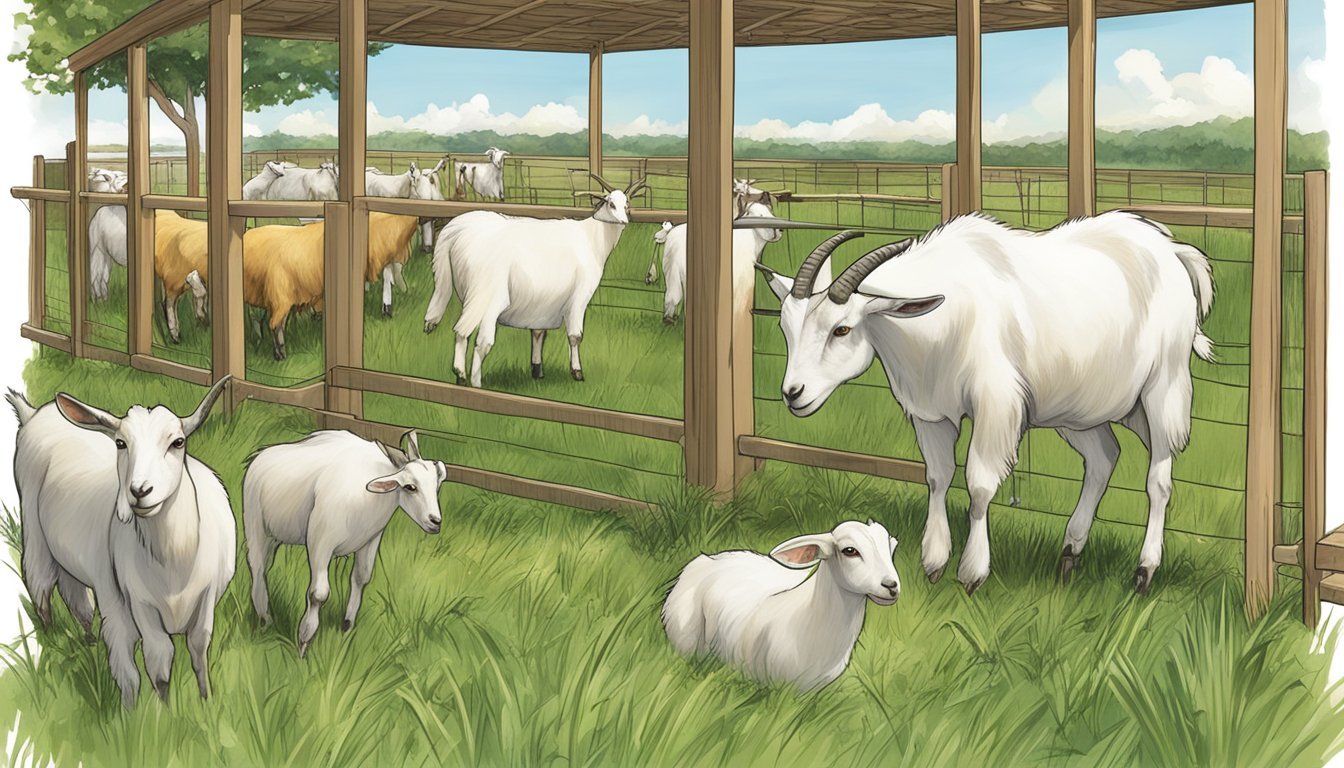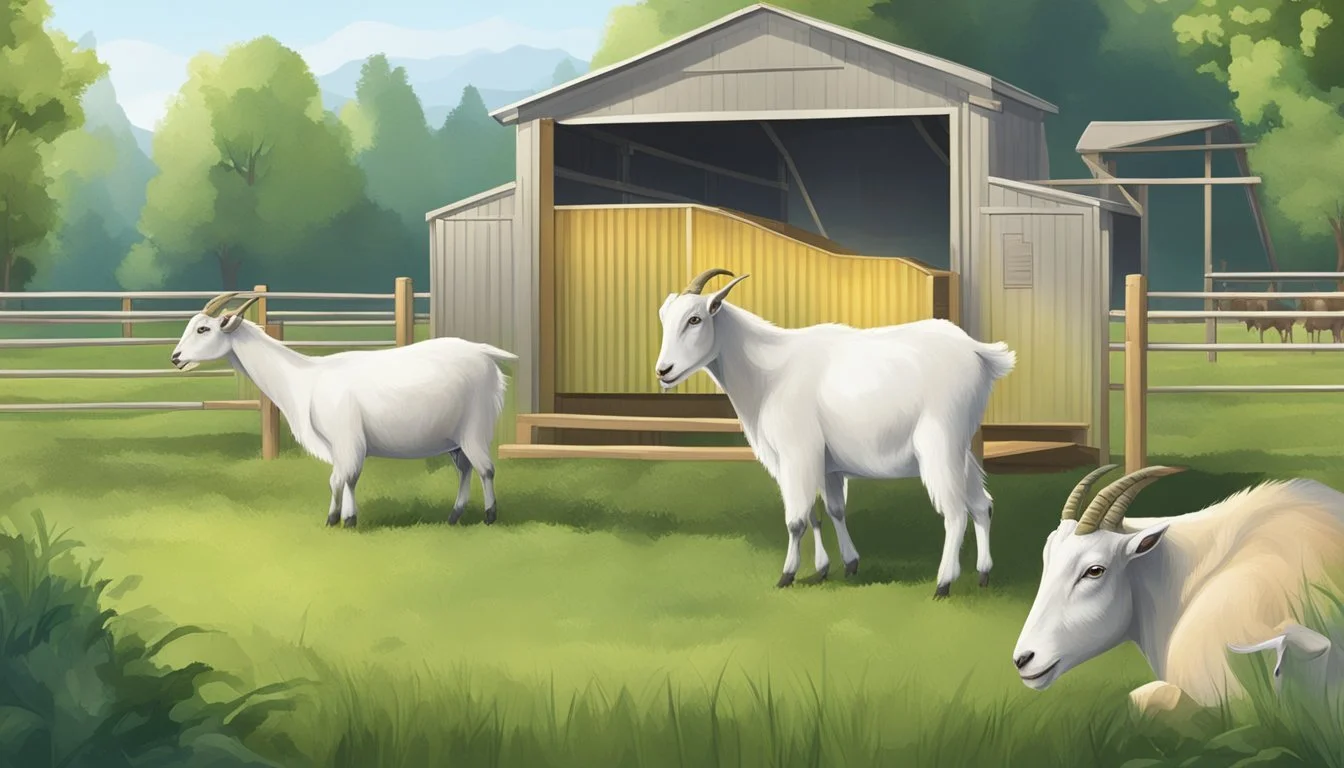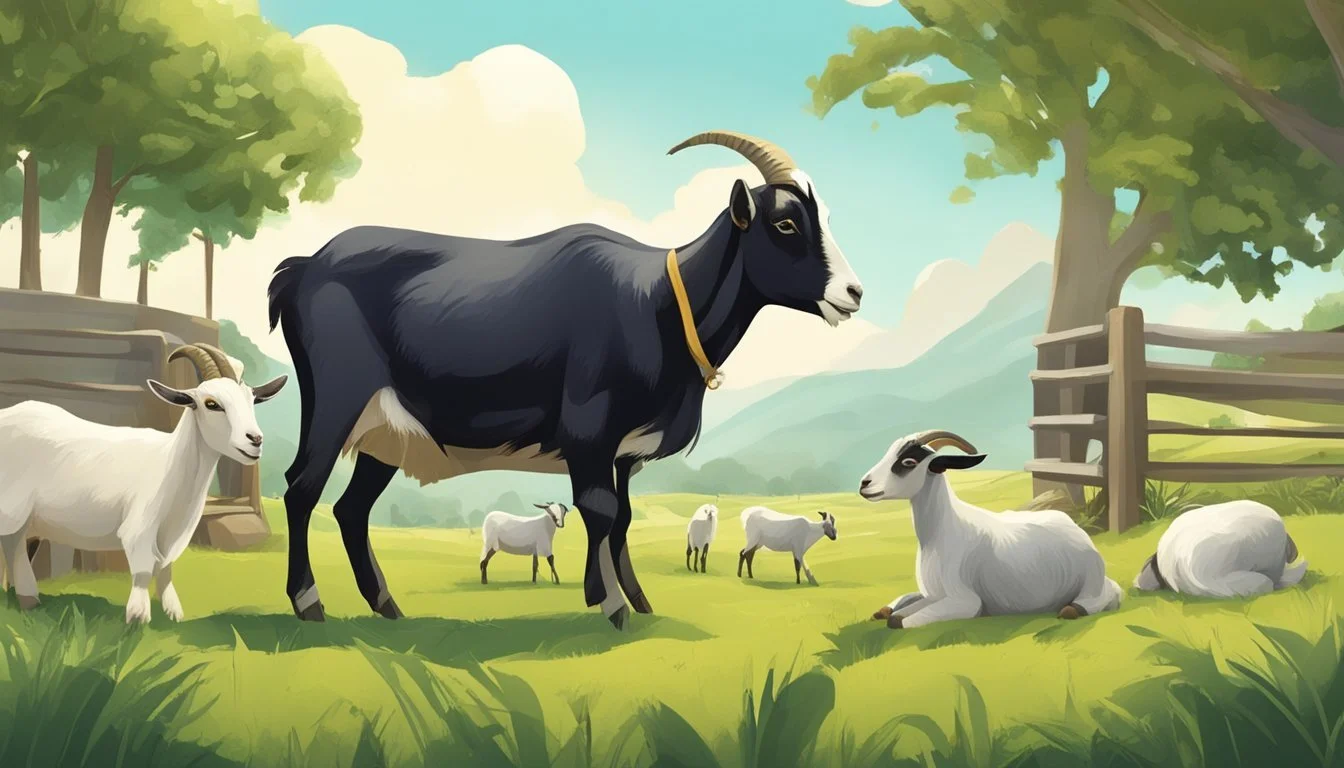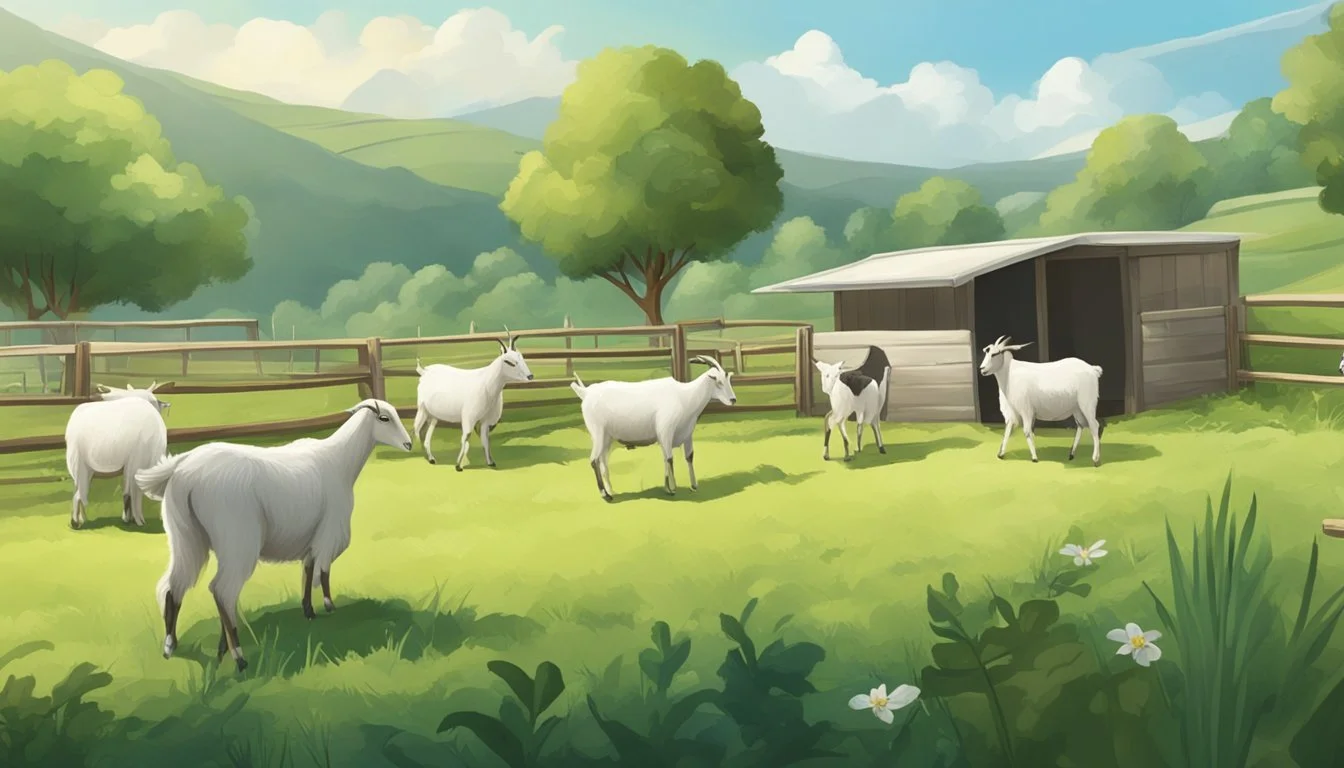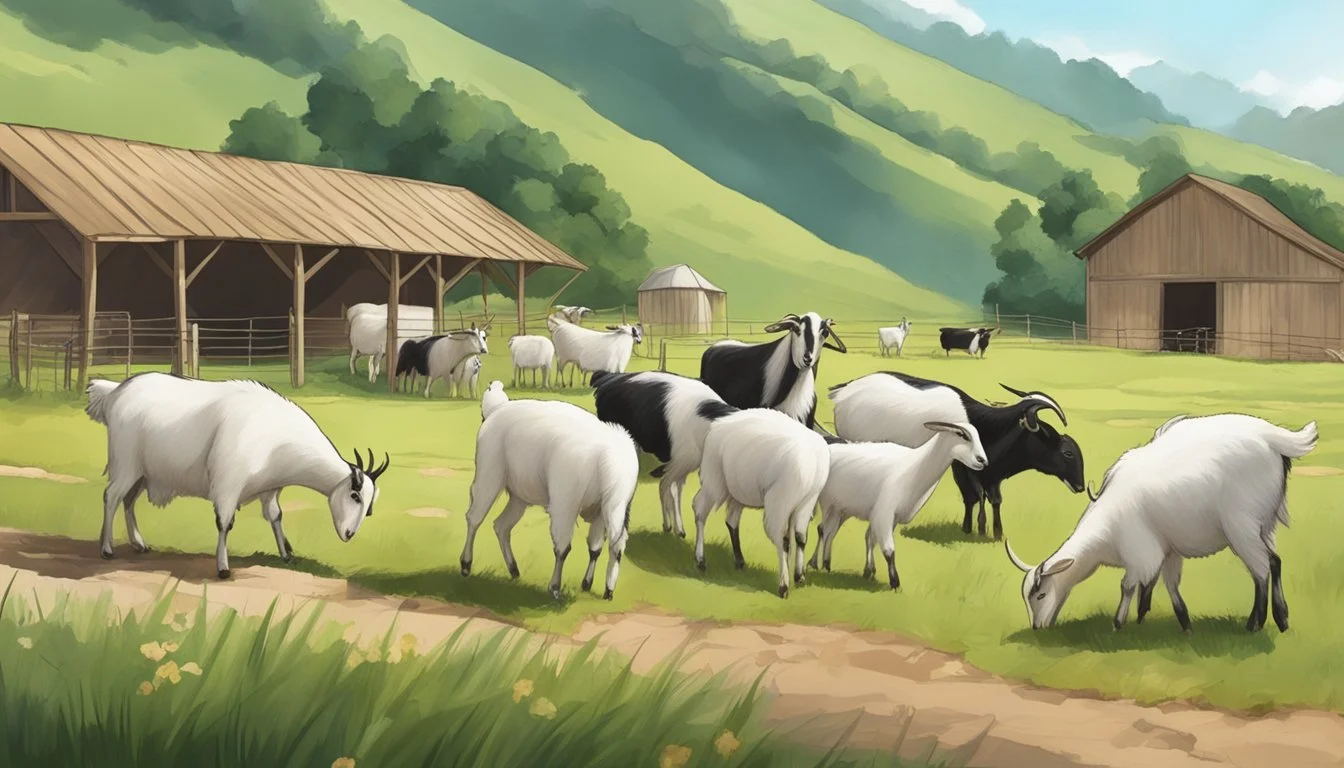How do I balance the mineral needs of goats on pasture versus stall-feeding strategies?
Balancing the mineral needs of goats is a crucial aspect of herd management that directly affects their health and productivity. Goats on pasture and those that are stall-fed both have specific nutritional demands that must be met to maintain their well-being. Pastured goats often have the advantage of foraging on a variety of plants, which can provide a range of minerals naturally. However, mineral content in pasture can vary greatly depending on the soil, plant species, and geography, making it essential to assess and possibly supplement the available nutrients to prevent deficiencies.
For stall-fed goats, the situation is markedly different. Without the diversity of a natural forage-based diet, these goats rely heavily on their caregivers to provide a properly balanced diet. Ensuring that stall-fed goats receive all necessary minerals requires careful selection and provision of feeds and supplements. Specific mineral mixes or fortified feeds may be required to meet their nutritional needs, which can differ by life stage and production status, such as growth, pregnancy, or lactation.
Overall, a proactive approach to goat nutrition, whether in pastured or stall-fed environments, involves regular assessments of dietary intake, understanding the unique needs of the herd, and supplementation as necessary to correct imbalances. It guarantees the health and productivity of goats, supporting successful goat farming operations.
Understanding Goat Nutrition
To raise healthy goats, it is paramount to understand their nutritional needs which vary depending on whether they are grazing on pasture or being stall-fed.
Essential Nutrients for Goats
Goats, like all ruminants, require a balance of essential nutrients to thrive, which includes water, energy, protein, fiber, minerals, and vitamins. Access to clean water is fundamental as it aids in digestion and other bodily functions. The mineral needs of goats are quite complex, with calcium, phosphorus, magnesium, and trace elements such as selenium, zinc, and copper playing crucial roles in their health. Specific mineral supplementation should be provided to ensure that goats gain the right balance, particularly when forage is deficient.
The Role of Roughage in Goat Diet
Roughage forms the cornerstone of a goat’s diet, particularly for those grazing on pasture. High-quality pasture offers goats an array of nutrients, while fiber from hay or browse is essential for rumen health, stimulating chewing, and promoting saliva production which buffers rumen pH. Given goats' natural propensity to browse, their diets must include a variety of forage to meet their nutritional needs. Providing adequate roughage prevents issues related to nutrition, such as bloat and acidosis, which can plague ruminants on high-grain diets.
Energy and Protein Requirements
The energy requirements of goats are met through their diet, which can consist of pasture, hay, and supplemental feeds. Energy is crucial for maintenance, growth, reproduction, and lactation. Protein is another critical nutrient that supports tissue growth and repair. For goats, especially those kept for meat and milk, protein is vital for productive performance. Lactating does have the highest protein needs, and their diets should be managed accordingly to ensure their nutritional demands are met. Throughout the various stages of life, from the developing kid to the mature buck or doe, both energy and protein levels must be adjusted to sustain optimal health and production.
Benefits of Pasture Grazing
Pasture grazing for goats encompasses a range of advantages that cater to their dietary and behavioral health. Goats thrive in an environment where they can exhibit natural feeding behaviors, enjoy a diverse diet of grasses and legumes, and where their mineral needs can be met with minimal supplements.
Natural Feeding Behavior
Goats inherently display a browsing feeding style, preferring to consume a variety of plants including weeds, shrubs, and the bark of young trees. This variety ensures a broad spectrum of nutrients supporting their health. With pasture grazing, they can naturally select their diet according to their mineral and nutritional requirements, which mimic their wild counterparts.
Grasses and Legumes
A pasture rich in grasses and legumes, such as clover, provides goats with essential nutrients like protein and energy. Clover, in particular, is a legume that fixes nitrogen in the soil, which promotes the growth of high-quality forage. Through rotational grazing, pastures can recover and maintain a dense and nutritious composition that supports the herd's health and growth.
Supplemental Feeding on Pasture
Even while grazing, goats may require supplemental feeding to balance their diet, especially minerals that are deficient in the local soil and forage. It's important to provide a mineral supplement that is designed for goats, as they have specific needs that differ from other livestock. Additionally, they must have access to clean water to maintain hydration and aid in the digestion of their forage-based diet.
Challenges of Stall Feeding
Stall feeding goats presents unique challenges in ensuring a balanced diet while avoiding nutritional gaps and maintaining optimal feed storage and management practices. Crafting the proper regime requires attention to detail and foresight into the specific needs of the animals.
Designing a Balanced Stall Diet
A balanced stall diet for goats should include a mix of roughage and concentrates to meet their dietary needs. Roughage, typically in the form of alfalfa hay, provides essential fiber that is key for proper digestion. Concentrates, such as grain, are denser in energy and protein, supporting growth and milk production. However, there's a delicate balance; too much concentrate can lead to issues such as acidosis, while insufficient roughage can result in nutritional deficiencies or feed waste.
Avoiding Nutritional Gaps
To prevent nutritional gaps, one must carefully assess the diet of stall-fed goats. For example, goats require specific minerals in their diet, and a lack of these can lead to health issues. Providing a diet with a diversity of feedstuffs, alongside mineral supplements when necessary, is crucial. The nutrient content of alfalfa and other hays should be regularly analyzed to ensure that the feed meets the goats' mineral needs without risking toxicity or deficiency.
Feed Storage and Management
Effective feed storage and management are central to a successful stall feeding system. Feed should be stored in a way that prevents spoilage and contamination, thereby reducing the risk of feed waste and ensuring the animals are consuming fresh, high-quality feed. Proper storage keeps grain and other feedstuffs free from moisture and pests. Moreover, feed rations must be measured accurately and adjusted frequently based on the goats' changing nutritional requirements and environmental conditions.
Feeding Equipment and Techniques
Balancing the mineral needs of goats requires understanding the appropriate feeding equipment and techniques whether the animals are on pasture or are stall-fed. Proper systems can help prevent waste, maintain feed freshness, and support a balanced diet.
Feeding Systems for Goats
When feeding goats, it is crucial to use the right system to deliver their diet effectively. A commonly used system is a rack or manger which helps keep forage off the ground and reduces contamination. For the stall-fed goats, a concentrate feeder can be useful for grain feed, while pasture-fed goats may benefit less from such a system but still need supplementation. The use of feeding racks helps minimize competition and ensure that all goats have access to their required nutrients.
Preventing Waste and Mess
Waste and mess can be substantially reduced with the correct feeding setup. A well-designed feeding rack or manger should allow goats to reach their food comfortably without dragging it out onto the ground. Partitioned feeders can prevent dominant goats from over-consuming and spilling feed, while a chaffhaye system can assist in reducing waste by delivering a fermented forage that is highly palatable and results in less spillage.
Ensuring Feed Freshness
Feed freshness is an essential aspect of goat nutrition. Stall-fed goats often receive more processed feeds such as grains, which should be kept in airtight storage containers to maintain freshness. Feeding equipment should be cleaned regularly to prevent mold and spoilage. Keeping feeders sheltered from the elements can ensure the feed remains dry and fresh, providing goats with the highest nutritional value.
Special Considerations
When optimizing mineral nutrition for goats, it is important to consider specific physiological needs, breed-related dietary requirements, and variances in seasonal forage quality.
Lactation and Growth Phases
During lactation, a goat's need for minerals such as calcium and phosphorus increases significantly to support robust milk production. It is vital for lactating does to have access to a well-balanced mineral mix, which may need adjustment depending on milk yield. Similarly, for growing goats, appropriate levels of trace minerals are essential to facilitate optimal growth and development.
Goat Breeds and Dietary Needs
Different breeds exhibit unique mineral requirements. For instance, the Boer goat, primarily raised for meat, may require a different mineral profile compared to the Spanish goat. Each breed has distinctive physiological traits that influence their nutritional needs—a factor that should be duly considered when formulating diets for stall-fed or pasture-raised goats.
Seasonal Feeding Changes
Seasonal variations significantly affect mineral availability in pastures. During summer, heat and drought can reduce the nutrient density of forages, necessitating supplementary feeding. Conversely, in winter, forages might lack sufficient vitamins and minerals due to diminished growth, resulting in the need for additional supplementation to maintain the health of adult goats and other small ruminants. It's critical to adapt mineral supplementation to these seasonal changes to avoid deficiencies.
Health and Disease Management
Balancing the mineral needs of goats on pasture versus stall-fed goats is pivotal for preventing disease and ensuring proper digestion. Attentive management of mineral intake and infectious disease control helps maintain overall goat herd health.
Preventing Digestive Upsets
To prevent digestive upsets in goats, it is essential to provide a steady and balanced diet. Sudden changes to their diet can disrupt the gut flora, leading to conditions like acidosis or bloat. Providing access to a complete goat mineral mix can help ensure that they receive the necessary nutrients without the risk of overconsumption of potentially harmful minerals.
Monitoring Mineral Intake
Goats require various minerals for optimal health, including macrominerals such as calcium and phosphorus, and trace minerals like selenium and zinc. Over or under-supply of these can lead to issues such as weak bones or poor immune response. Regularly monitoring the mineral intake of goats can help in maintaining their health, especially in a mixed herd where species have different mineral tolerances.
Control of Infectious Diseases
Infectious diseases such as Peste des petits ruminants (PPR) can devastate a goat herd. Implementing biosecurity measures, such as quarantine for new animals and vaccination where appropriate, is crucial. Effective parasite management through pasture rotation can help control the spread of infectious agents like bacteria and parasites that can cause diseases in goats.
Proper mineral balance and health management play a key role in the welfare and productivity of both pastured and stall-fed goats.
Sustainable Goat Farming Practices
Sustainable goat farming integrates practices that enhance environmental health, economic profitability, and social equity. To achieve these goals, careful management of pastures and efficient recycling of farm waste are crucial.
Managing Pastures and Crop Rotation
To maintain the health of pastures, one should implement a system of crop rotation. Crop rotation breaks pest and disease cycles, provides a variety of nutrients to goats, and improves soil fertility. Rotating crops and allowing land to rest prevents overgrazing, which can lead to soil erosion. A typical rotation might include legumes, grasses like timothy, and other forbs that goats favor.
Introducing different species of plants in the farm's pasture not only promotes biodiversity but can be tailored according to the nutritional needs of the herd. For instance, legumes fix nitrogen into the soil, reducing the need for synthetic fertilizers, while deep-rooted plants can enhance soil structure.
Recycling Waste and Bedding
Implementing a composting system is a key component of sustainable goat farming practices. Farmers can compost manure and used wood shavings from goat bedding to create a nutrient-rich natural fertilizer, reducing the reliance on chemical alternatives. Compost serves as an excellent amendment for pastures and crop fields, closing the nutrient cycle of the farm.
Moreover, using recycled bedding materials, such as wood shavings, ensures a sustainable and cost-effective approach to managing the living spaces for goats. It is essential to monitor the buildup of these materials to prevent the occurrence of pests and maintain a healthy living environment for the herd.
Economics of Goat Farming
The economic success of goat farming hinges on careful management of costs and profits, alongside effective marketing and meat production strategies. These factors collectively determine the financial viability of the operation.
Calculating Costs and Profitability
Calculating the costs and profitability of a goat farming operation requires a thorough analysis of both fixed and variable expenses. Fixed costs include land, infrastructure, and equipment, while variable costs encompass feed, healthcare, and labor. Farmers must ensure their goat production is sufficiently profitable to cover these costs by projecting the potential income from the sale of meat, milk, or breeding stock. Profits can be calculated by subtracting total costs from total revenues. Effective record-keeping and financial planning are crucial for identifying areas where costs can be trimmed or efficiency can be improved to enhance overall profitability.
Marketing and Meat Production
Marketing is a key component of successful goat farming. Farmers should identify target markets and develop a strategy to reach potential buyers, whether it's through farmers' markets, wholesale distributors, or direct sales. As for meat production, meat goats must be raised to meet the specific preferences of the market, such as weight, quality, and cut. Thus, a focus on increasing productivity, such as higher birth rates and optimal growth of kids, directly influences income from meat sales. A well-executed marketing plan and efficient meat production system can significantly increase the chances of a lucrative goat farming enterprise.
Stall Feeding vs. Pasture System
In livestock management, achieving optimal nutrition for goats can be approached through either a pasture system or a stall feeding system. Each method has differing implications for feed efficiency and goat welfare.
Comparing Feed Efficiency
Pasture System: Goats grazing in pastures obtain a diverse diet, but the nutritional quality is subject to seasonal variations. This can lead to inconsistent intake of minerals and nutrients critical for their health. The pasture system allows livestock to exercise natural foraging behaviors, which can positively affect their digestion and overall efficiency in nutrient absorption.
Stall Feeding System: In contrast, stall-fed goats receive a controlled diet that can be fine-tuned to meet precise nutritional requirements. A stall feeding approach ensures a consistent and efficient intake of feed, which may be enriched to provide all necessary minerals and nutrients. However, the lack of variety could potentially affect gut health if not managed carefully.
Impact on Goat Welfare
Pasture System: Goats thrive in natural environments where they can roam and browse, which promotes a high level of welfare. The pasture system supports social structures within herds and enables a range of natural behaviors, contributing to improved mental health.
Stall Feeding System: Offering protection from predators and environmental stressors, a stall feeding system is seen by some as enhancing goat welfare. However, it requires attentive management to prevent issues caused by confinement, such as stress and limited mobility. Adequate space, enrichment, and social interaction should be prioritized to maintain welfare standards.
Each system demands thoughtful management to optimize both feed efficiency and goat welfare, requiring a balance between controlled diets and the natural graze of pastures.

